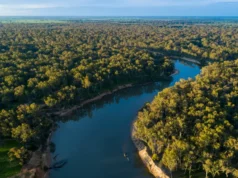Storm photo credit: Norm Oorloff
A feature story for the Weekend Australian Magazine, April 2017

Photo credit: Julian Kingma

There was a DJ at Hope Carnevali’s 21st. It was a cool February night and the Plaza Tavern was going off. There was dancing, speeches, laughter, the cutting of the cake. The only thing missing was Hope Carnevali.
Her funeral was on the last day of November. There wasn’t much room inside the casket because people kept throwing in things she might need up there. Jeans and sensible shoes for when she gets jack of the heels. Make-up, toys, money. Quite a bit of money. “You know what nonnas are like,” laughs Hope’s mother Danielle Carnevali, remembering the open casket and how beautiful her daughter looked, and the gifts being tossed in like coins to a wishing well. Here, she’ll need this! Laughter is important. So is celebrating her life. “If we don’t celebrate her life, then we let her die. She’ll always be alive if we keep her alive.”
Ann Peiris is grieving in a different way. She never once says his name. Maybe because it hurts too much, or maybe because a name alone doesn’t say enough. Ranjith. A mere name doesn’t convey the honour, the respect, the love and the connection two people married for 36 years can know. He was the boy next door. They grew up in Colombo, Sri Lanka, married in 1980 and had two children, Roshan and Tania. In 1987 they made a new start in Australia, their home ever since. The man has a title. “My husband,” says Ann Peiris. “My husband is gone.” It’s been five months. The grief is so consuming it’s emptied her out, left just a shell of a strong 58-year-old woman. She tries again to get out the message she feels compelled to deliver. “My husband died in vain.”
Hope Carnevali died on her front lawn in Hoppers Crossing, in Melbourne’s western suburbs, after suffering a catastrophic asthma attack on November 21 last year. Ranjith died in hospital eight days later. They were two of nine people in Melbourne who lost their lives as a result of a freak event called thunderstorm asthma. No one predicted or was prepared for the obscure phenomenon that sent the city’s emergency services into meltdown as thousands of people suffered simultaneous asthma attacks after an evening thunderstorm.
There were more than 2000 emergency calls for ambulances on the night; 1268 of those were Code 1, the highest priority. During its peak there were 593 per cent more calls than normally forecast. By the time the first warning to the public went out, the damage had been done. Some people died in their driveways or in their homes, waiting for an ambulance that never came. Some died in hospital days or weeks later. Why an evening thunderstorm should have such devastating consequences for so many people in such a short time and why no one was ready for it wasn’t clear at the time.
One of the seemingly mysterious aspects of what happened on November 21 was that not everyone who suffered a severe asthma attack had a previous history of asthma. A survey by Asthma Australia of 2500 people who had an asthma attack that night showed only 58 per cent had a previous diagnosis of asthma. But 92 per cent shared a different common link. It’s a link that medical experts hope will mean a future tragedy is averted and, like thunderstorm asthma itself, it’s been understood for a lot longer than most people realise.
Read full story here


